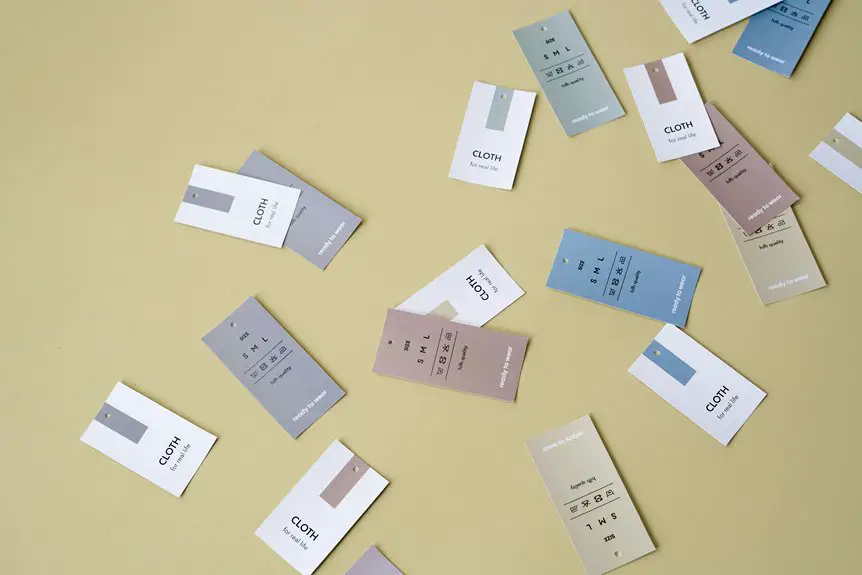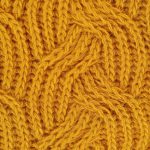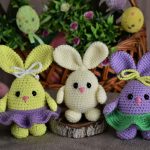When you see “Angora blend” on a fabric label, it means the material combines soft, lightweight Angora rabbit fibers with other fibers like wool, cotton, or synthetics to boost durability and shape retention. This blend offers warmth and softness but is less fluffy than pure Angora. It’s easier to care for and often more affordable. If you want to understand how to spot quality, care for your garment, and consider environmental factors, keep exploring the details behind this cozy fabric choice.
Table of Contents
Key Takeaways
- “Angora blend” means the fabric contains Angora fibers mixed with other materials like wool, cotton, silk, or synthetics for added durability.
- Angora blends offer softness and warmth but are less fluffy and softer than 100% pure Angora.
- Blends improve garment strength, shape retention, and reduce pilling compared to pure Angora fibers.
- Fiber percentages in blends affect care needs, texture, durability, and price of the fabric.
- Ethical and environmental impacts vary; blends with synthetics have higher carbon footprints and recycling challenges.
What Is Angora Fiber?
Angora fiber comes from the Angora rabbit, known for its silky and soft fur. When you feel Angora fabric, you’ll notice its lightweight warmth and smooth texture.
This fiber is prized for its exceptional softness and insulating properties, making it perfect for cozy garments. Unlike sheep’s wool, Angora fibers have a natural sheen and fluffiness that you can’t easily find elsewhere.
If you’re looking at a fabric label, understanding that pure Angora is delicate and requires careful care helps you appreciate its value. Since it’s harvested by gently brushing or shearing the rabbit, not all fibers are the same quality.
Knowing these details lets you shop smarter and recognize why Angora fiber stands out in luxury textiles.
Common Fibers Found in Angora Blends
When you check angora blends, you’ll often see them combined with wool or synthetic fibers.
These mixes improve durability and softness while keeping warmth.
Understanding these combinations helps you choose fabrics that fit your needs best.
Typical Fiber Combinations
You’ll often find angora blended with other fibers to enhance durability and texture. Commonly, cotton is added to angora for breathability and softness, making garments more comfortable for everyday wear.
Silk is another frequent partner; it boosts the fabric’s sheen and smoothness without sacrificing warmth. Sometimes, linen joins the blend to add strength and a natural crispness, perfect for lighter clothing.
Blends with cashmere or alpaca create luxuriously soft fabrics with extra insulation, ideal for colder climates. These combinations balance angora’s delicate fluffiness with the resilience and practicality of other fibers, ensuring your clothing lasts longer and feels great.
Understanding these typical fiber mixes helps you choose angora blends that match your needs and style preferences.
Wool and Synthetic Mix
Although wool brings natural warmth and resilience to fabrics, combining it with synthetics often enhances angora blends in unexpected ways.
When you see angora blended with fibers like nylon, polyester, or acrylic, it’s designed to improve durability and reduce costs. Wool adds softness and breathability, while synthetics contribute strength and elasticity.
This mix helps the fabric maintain shape and resist wrinkles, so your garment lasts longer and looks better. You’ll also find that synthetic fibers can make the blend easier to care for, as they often tolerate washing and drying better than pure wool.
Understanding this combination helps you appreciate why angora blends aren’t just about softness—they balance comfort with practical wearability.
Benefits of Blending
Blending angora with other fibers brings together the best qualities of each material, creating fabrics that perform better in everyday wear.
When you choose an angora blend, you often get the softness and warmth of angora paired with the durability of wool or the stretch of synthetic fibers like nylon or acrylic. This combination means your garment won’t pill easily, keeps its shape, and feels cozy without overheating you.
Adding cotton can improve breathability, making the fabric more comfortable in varied temperatures.
By blending, manufacturers balance luxury with practicality, so you enjoy angora’s signature softness without worrying about delicate care or rapid wear.
Understanding these blends helps you pick clothing that suits your lifestyle and keeps you comfortable longer.
How Angora Blend Differs From Pure Angora
When you compare angora blends to pure angora, you’ll notice differences in fiber composition that affect how the fabric feels and performs.
Blends often mix angora with other fibers, which can change the texture and warmth you get.
Understanding these variations helps you choose the right fabric for your needs.
Fiber Composition Variations
How can you tell the difference between pure Angora and an Angora blend just by looking at the label? The key lies in the fiber composition listed.
Pure Angora fabric contains 100% Angora fibers, harvested from Angora rabbits. In contrast, an Angora blend mixes Angora with other fibers like wool, nylon, or acrylic to enhance durability, stretch, or reduce cost.
For example, a label might read “70% Angora, 30% nylon,” indicating the blend. These variations affect the fabric’s performance and care needs.
Texture and Warmth Differences
Although pure Angora feels incredibly soft and lightweight, an Angora blend offers a different texture and warmth that you might notice right away.
When you wear pure Angora, you experience a silky smoothness and exceptional insulation without bulk. In contrast, blends mix Angora with fibers like wool or acrylic, which can add durability but slightly reduce softness.
You might feel a coarser texture or less fluffiness compared to pure Angora. However, blends often provide better shape retention and can be warmer in certain conditions due to the combined fibers.
Benefits of Angora Blended Fabrics
Because angora fibers are incredibly soft and warm, blending them with other materials enhances both comfort and durability.
When you choose angora blended fabrics, you get the luxurious softness of angora combined with the strength of fibers like wool, cotton, or synthetic materials. This mix helps your garment resist pilling and stretching, so it keeps its shape longer.
You’ll also notice improved breathability and moisture management, which keeps you comfortable throughout the day. Plus, angora blends tend to be lighter and less expensive than pure angora, making them a practical choice without sacrificing feel.
Typical Uses for Angora Blend Textiles
Blending angora with other fibers not only boosts comfort and durability but also broadens the range of garments and accessories you can enjoy.
When you choose angora blend textiles, you tap into versatile options that keep you cozy and stylish, whether at home or out and about.
You’ll find these blends commonly used in:
- Sweaters and cardigans that offer softness with long-lasting wear
- Scarves and gloves providing warmth without bulk
- Hats and socks combining luxury feel with practicality
Each piece benefits from angora’s natural insulation and the added strength from blended fibers, making your wardrobe both functional and elegant.
How to Identify Quality in Angora Blends
When you want to choose angora blends that truly last, paying attention to fiber content and craftsmanship is key.
Start by checking the label for a higher percentage of angora; blends with at least 30% angora tend to offer better softness and warmth.
Feel the fabric—quality angora blends should be soft without excessive shedding or prickliness.
Inspect the knit or weave; tight, even stitching indicates good craftsmanship that will hold up over time.
Don’t overlook the presence of synthetic fibers; a small amount can enhance durability but too much reduces natural softness.
Finally, trust reputable brands known for quality angora products.
Caring for Angora Blend Garments
To keep your angora blend garments looking and feeling their best, you’ll need to handle them with care.
These fabrics are delicate, so proper maintenance is essential to avoid damage like shedding or pilling. Always check the care label for specific instructions, but here are some general tips to follow:
- Hand wash or use a gentle cycle with cold water to preserve the fibers.
- Lay flat to dry instead of using a dryer, which can distort the shape and texture.
- Store properly by folding and placing in a breathable bag to prevent stretching and moth damage.
Price Considerations for Angora Blend Products
Although angora blends offer softness and warmth, their price can vary widely based on factors like fiber quality and brand reputation.
When you shop, keep in mind that higher angora content usually means a higher price tag because it’s more labor-intensive to produce. Well-known brands often charge more for their craftsmanship and reliability.
You might find less expensive options with lower angora percentages or mixed with synthetic fibers, but those won’t feel or last quite the same. Also, limited edition or designer pieces tend to cost more.
When deciding what to spend, consider how often you’ll wear the garment and how much you value its comfort and durability. Balancing these aspects helps you pick angora blends that fit both your budget and your needs.
Environmental Impact of Angora Blended Fabrics
Because angora blended fabrics combine natural and synthetic fibers, their environmental impact varies depending on production methods and materials used.
When you choose these fabrics, consider how each component affects the planet. Angora wool, if sourced responsibly, can be renewable and biodegradable. However, synthetic fibers like nylon or polyester often rely on fossil fuels and contribute to microplastic pollution.
Keep these points in mind:
- Sourcing: Ethical angora comes from humane farming practices, reducing animal welfare concerns.
- Synthetic content: Higher synthetic percentages increase carbon footprint and non-biodegradability.
- Waste and recycling: Blended fabrics are harder to recycle, often ending in landfills.
Frequently Asked Questions
Can Angora Blends Cause Allergies or Skin Irritation?
Yes, angora blends can cause allergies or skin irritation if you’re sensitive to animal fibers. You might experience itching or redness, so it’s smart to test a small patch or choose hypoallergenic fabrics instead.
How Does Angora Blend Fabric Perform in Different Climates?
Did you know 60% of people feel uncomfortable in humid climates? Angora blends keep you warm in cold weather but might feel too hot and itchy in humid or hot climates, so choose wisely based on where you live.
Are Angora Blends Suitable for Machine Washing?
You shouldn’t machine wash angora blends because the delicate fibers can shrink or felt. Instead, hand wash gently in cold water or use a delicate cycle with a mesh bag to protect the fabric.
Do Angora Blends Retain Color After Multiple Washes?
Like a sunset fading slowly, angora blends can lose color after multiple washes. You’ll want to wash them gently in cold water and avoid harsh detergents to help keep those vibrant hues looking fresh longer.
Can Angora Blend Garments Be Altered by Tailors Easily?
You can have angora blend garments altered by tailors, but they require careful handling due to their delicate fibers. Tailors might take extra precautions to prevent damage and maintain the fabric’s softness and shape during alterations.
- Can You Sweat Through Corduroy? Understanding Fabric Breathability - July 4, 2025
- Understanding the Corduroy Shirt: A Classic Fabric Choice - July 4, 2025
- Styling Tips for Your Brown Corduroy Shirt: Elevate Your Look - July 4, 2025






